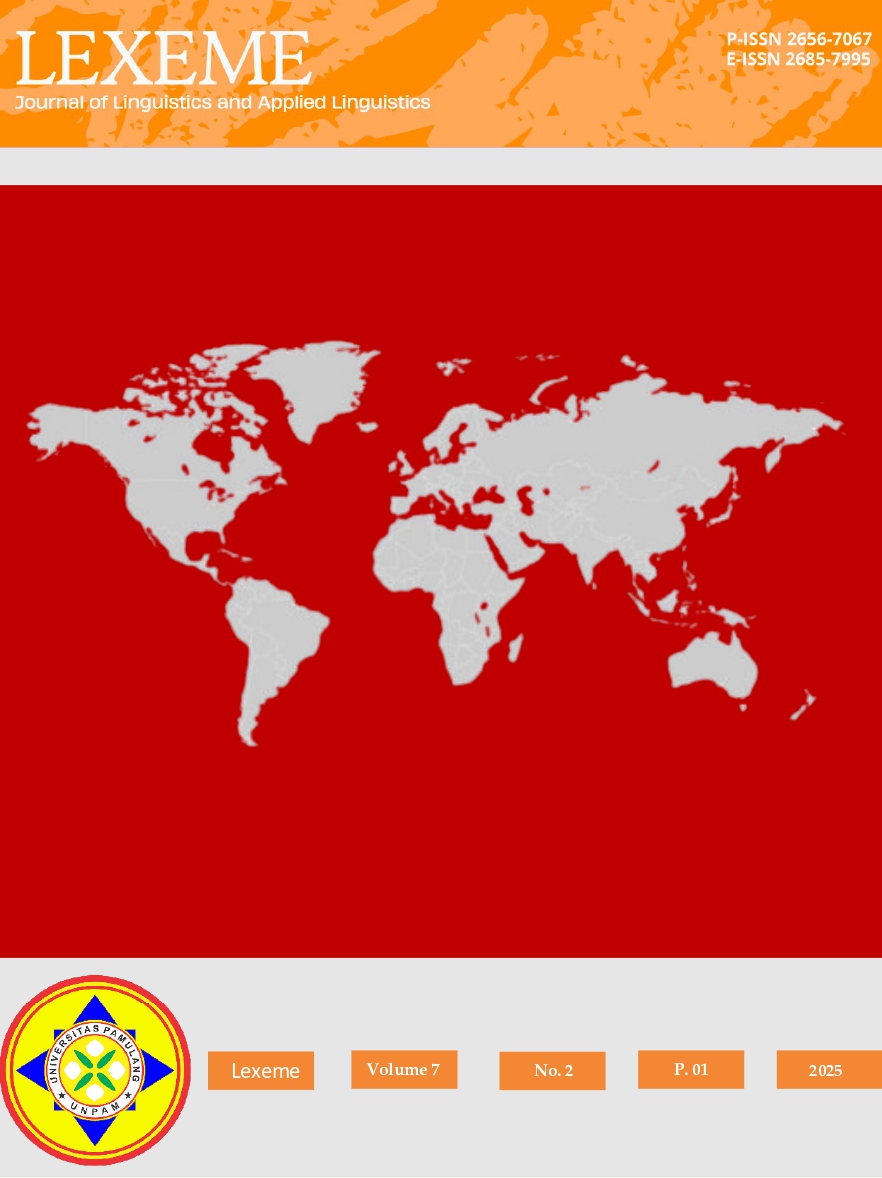AI Era: Using Hablo to Improve the Students’ English-Speaking Skills
DOI:
https://doi.org/10.32493/ljlal.v7i1.44669Keywords:
action research, artificial intelligence, Hablo, speaking EnglishAbstract
English is no longer an exclusive language because it is now learned by people worldwide. In Indonesia, English plays a significant role in various domains, including society, business, politics, technological development, and education. However, Indonesian students often feel shy about speaking English when they believe they have not mastered the language. It is crucial for students to develop English-speaking skills to communicate effectively. Yet, speaking is a challenging skill to master. The third-semester students of STKIP PGRI Bandar Lampung in the academic year 2024/2025 faced several difficulties in speaking English, including a limited vocabulary, incorrect pronunciation, a lack of interlocutors, and minimal opportunities for extended interaction in English. To address these challenges, the researchers used Hablo, an application that integrates artificial intelligence features with English language learning. This study employed classroom action research conducted over two cycles. The results demonstrated significant improvements in both the students' speaking skills and their learning activities across the pre-cycle, Cycle I, and Cycle II. The mean speaking test score increased from 64.8 in the pre-cycle to 67 in Cycle I and further to 77.75 in Cycle II. The findings indicate that using Hablo positively impacts students' speaking abilities and engagement in learning. This research highlights the potential of integrating AI-powered tools, like Hablo, into English language teaching to address students' specific challenges in speaking. The study suggests that such tools can enhance vocabulary acquisition, improve pronunciation, and provide opportunities for interactive learning. These findings emphasize the importance of leveraging technology to create engaging and effective language-learning environments
References
Alfarisy, Fitri. (2021). Kebijakan Pembelajaran Bahasa Inggris di Indonesia Dalam Perspektif Pembentukan Warga Dunia Dengan Kompetensi Antar Budaya. Jurnal Ilmiah Profesi Pendidikan. 6 (3), 303-313.
Alvionita, I., Munir., & Faradiba, S. (2022). Improving Students’ Speaking Ability Using Show and Tell Technique. Journal of Excellence in English Language Education 1(3).
Apriyanti, F., Dayurni, P., Evasufi, L., Pernanda, D., & Meilisa, R. (2022). The Impact of Gadgets on Students Learning Outcomes: a Case Study in Indonesia Junior High School Students. IJEIT. 5 (5), 121-130.
Bartneck, C., Lutge, C., Wagner, A., & Welsh, S. (2021). What is Ai? In SpringerBriefs in Ethics. 5-16.
Brown, H. Douglas. (2001). Teaching by Principles: An Interactive Approach to Language Pedagogy. 2nd Edition. New Jersey: Prentice Hall, Inc.
Budiharto, A., Mentari, S., D.T., & F, K. (2020). Students’ Perception Attitude and Advantage Towards The Use of Whatsapp Mobile Learning Outside Classroom: An Indonesian Student’s Experience. International Journal of Education, Information Technology and Others. 3(3). 591-599
Burns, A. (2010). Doing Action Research in English Language Teaching. https://doi.org/10.4324/9780203863466
Garpersz, S. & Uktolseja, L. (2020). The Use of Serial Picture Media to Improve English Speaking Ability at SMP YPK Syaloam Klademak Sorong City. Jurnal Pendidikan Bahasa, 7(2), 36-45.
Hastomo, T., Kholid, M. F. N., Muliyah, P., Septiyana, L., & Andewi, W. (2024). Exploring how video conferencing impacts students’ cognitive, emotional, and behavioral engagement. Journal of Educational Management and Instruction (JEMIN), 4(2), 213–225. https://doi.org/10.22515/jemin.v4i2.9335
Herlisya, D. & Wiratno, P. (2022). Having Good Speaking English Through Tiktok Application. Journal Corner of Education, Linguistic, and Literature 1(3), 191-198.
Herlisya, D. & Wiratno, P. (2023). Round Robin as an Interactive Technique to Teach Speaking. Journal on Education, 5(4) 11824-11832.
Istiara, F., Hastomo, T., & Indriyanta, W. A. (2023). A study of students’ engagement and students’ speaking skill: A correlational research. TEKNOSASTIK, 21(1), 1–7. https://doi.org/10.33365/TS.V21I1.2198
Kemmis, S., & Taggart, R. (1988). The Action Research Planner 3rd Ed. Geelang: Deakin University Press.
Luckin, R., Holmes, W., Griffiths, M., & Forcier, L.B. (2016). Intelligence Unleashed: An Argument for AI in Education.
Mullany, L., & Stockwell, P. (2021). Qualitative, quantitative, and mixed methods research (Dörnyei). In Introducing English Language. https://doi.org/10.4324/9781315707181-60
Taherdoost, H. (2021). Data collection methods and tools for research; a step-by-step guide to choose data collection technique for academic and business research projects. International Journal of Academic Research in Management (IJARM), 10(1), 10-38.
Downloads
Published
How to Cite
Issue
Section
License
Copyright (c) 2024 Destia Herlisya, Purna Wiratno

This work is licensed under a Creative Commons Attribution-ShareAlike 4.0 International License.







